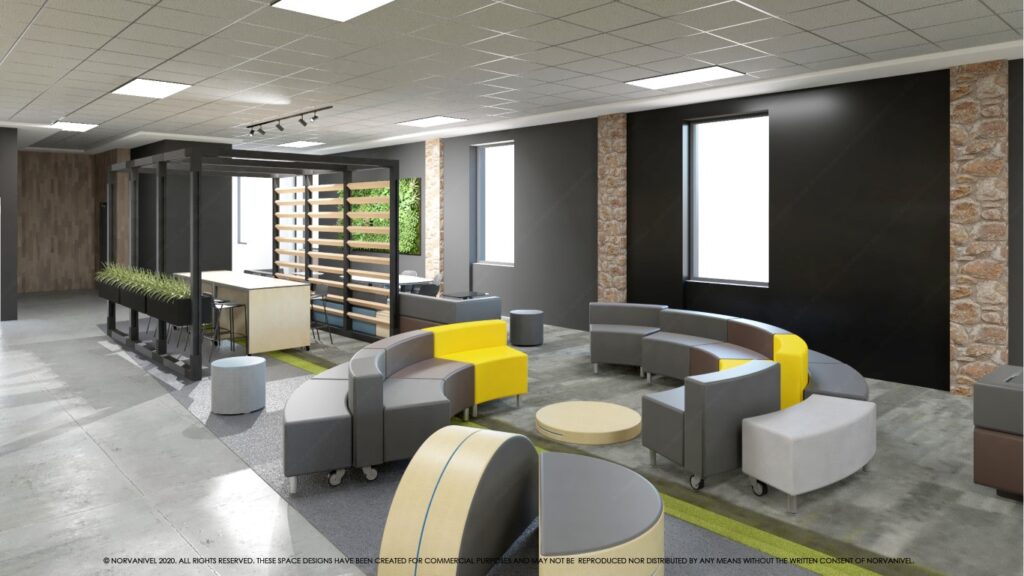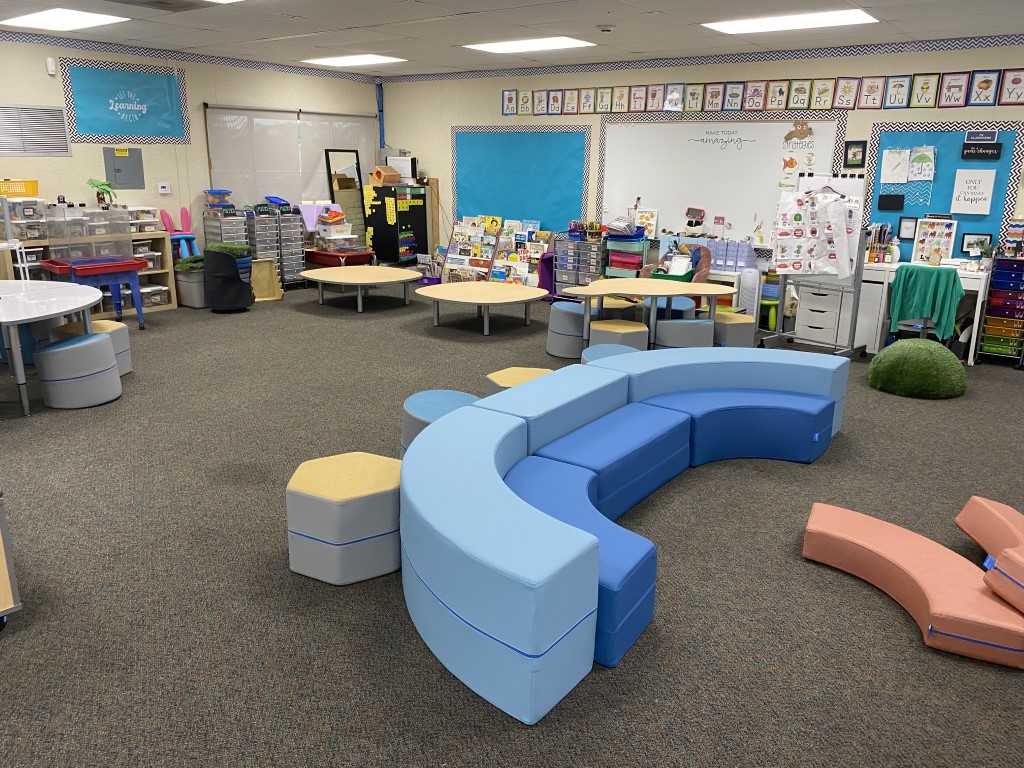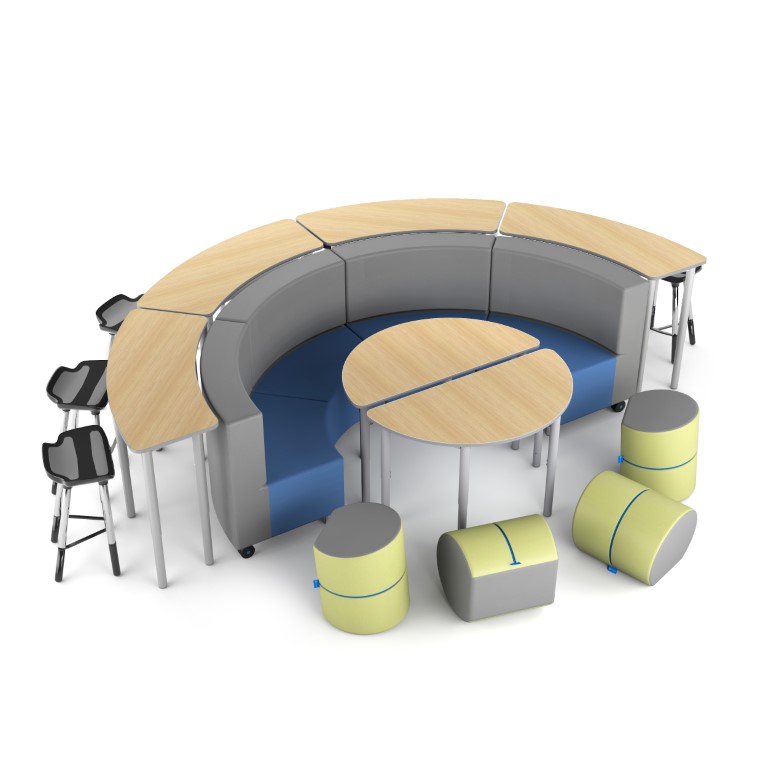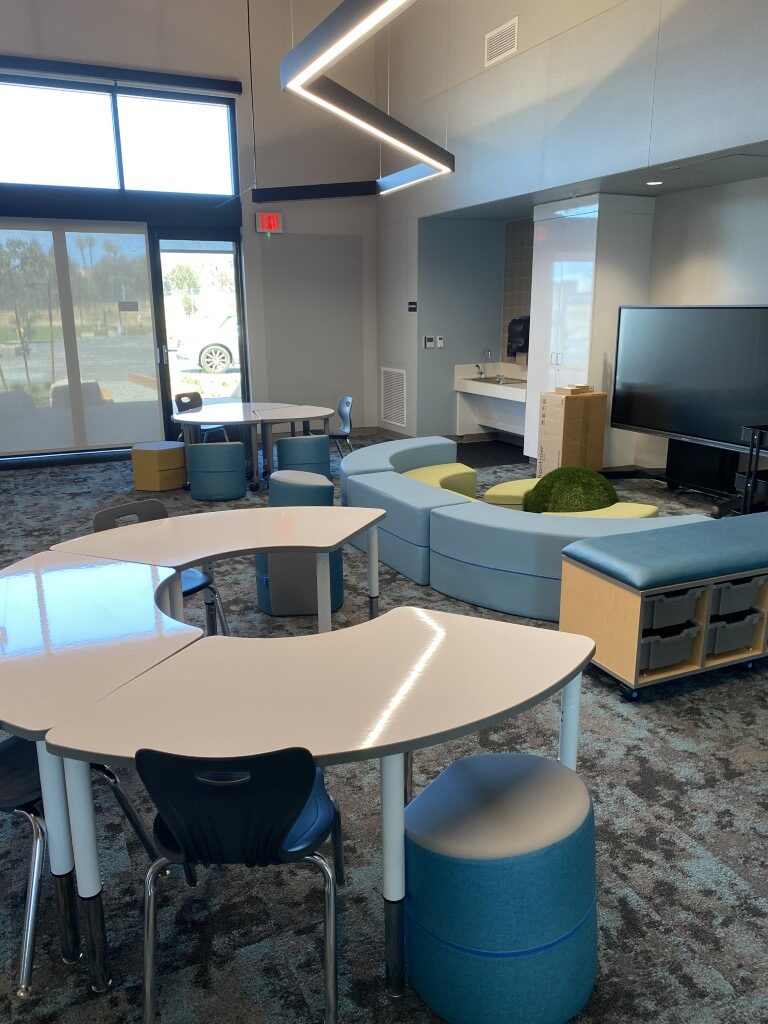Understanding by Design & the Learning Environment
A well-known best-practice instructional methodology is Understanding by Design. Usually, partnered by Backwards Design. Both practices highlight the importance of gestalt theory, especially throughout the unit planning process. In this post, we will discover the true definition of understanding, transferability, and gestalt theory, while accompanying the working definitions with best-practices in learning space design.
‘To begin with the end in mind means to start with a clear understanding of your destination. It means to know where you’re going so that you better understand where you are now so the steps you take are always in the right direction.’
-Stephen R Covey, The 7 Habits of Highly Effective People, 1989
Understanding
Emphasis on the recall of information has long dictated how educational entities organize and schedule units, lessons, assessments, and overall objectives. However, does this recall truly map learners’ understanding and transferability of content? Does recall truly map facilitators’ understanding and transferability of content? Categorizing units via Big Ideas, Core Tasks, Essential Questions, and varied Assessments are key ways to methodically prepare for a new academic year.
The term understanding has been vastly used to describe rates of comprehension. But what does it truly mean to understand? Does simply having insight justify mastery of understanding? How does one measure insight effectively? The most accurate installation of understanding within a learning environment can be seen by ‘the capacity to apprehend general relations of particulars.’ This is where transferability enters the scene.
Transferability
The definition of transferability reads ‘the quality of being capable of exchange or interchange.’ (Vocabulary.com) Regarding content- we can deduct that the relationship between understanding and transferability must exist to have true reasoning of information. For example, one could know that a stove becomes hot. One could also know that pans go on top of a stove. However, it’s the transferability of those details that provides understanding; the pan will also become hot. Sometimes, exchange of information is impeded when executive functioning processes fail. When this occurs, additional supports might be necessary to derive full transferability.
Gestalt Theory
Utilizing Understanding by Design to measure transferability can be more successfully implemented by interposing Gestalt Theory.
Gestalt Theory is the ‘concept that a deeper level of understanding of learning can come from critically thinking about the whole picture and how the summation of the parts that create the whole interact.’ (Associates in Pediatric Therapy)
Incorporating Gestalt Perception within unit planning allows for comprehensive learning design. Creating Big Ideas, Core Tasks, Essential Questions while organizing assessment methods from the end to the beginning means less gaps and more comprehension.
Within Understanding by Design – there are 3 main components:
- Identify Desired Results
- Determine Acceptable Evidence
- Plan Learning Experiences & Instruction

Learning Experiences & Instruction
According to Ryan S Bowen with Vanderbilt University Center for Teaching (2017), ‘The final stage of backward design is when instructors begin to consider how they will teach. This is when instructional strategies and learning activities are created.’ Here are questions a facilitator might consider while outlining learning experiences and instruction –
- What enabling knowledge (facts, concepts, principals) and skills (processes, procedures, strategies) will [learners] need in order to perform effectively and achieve desired results?
- What activities will equip [learners] with the needed knowledge and skills?
- What will need to be taught and coached, and how should it best be taught, in light of performance goals?
- What materials and resources are best suited to accomplish these goals?
How can the physical learning environment support the creation and implementation of learning experiences and instruction?
Mapping a unit from the end to the beginning gives a facilitator a clear trajectory of objectives and core tasks. The environment can transform to the meet the needs of each learner and each core task. Differentiating modular layouts allows the physical space to connect with each type of experience. The following are examples of learning experiences that can be elevated by incorporating the physical environment. A learner could experience each of these activities within a given week – sometimes, within a given day.
- Large and/or small group discussion
- Interactive lecturing and think-pair-shares
- Flipped classroom
- Cooperative learning (including team-based and project-based learning)
- Guided note-taking
- Guided inquiry for problem-solving
Engaging the physical learning space for understanding, transferability, and the consideration of Gestalt Theory promotes ‘transparent and explicit instruction’. All of which can make the beginning of an academic year function more seamlessly – where concentration can be spent on creating foundational relationships.
Stay tuned for sneak peeks …
- New Designs!
- New Product Features!
- Innovative Curriculum Frameworks!
- Coffee Talk Recaps!



